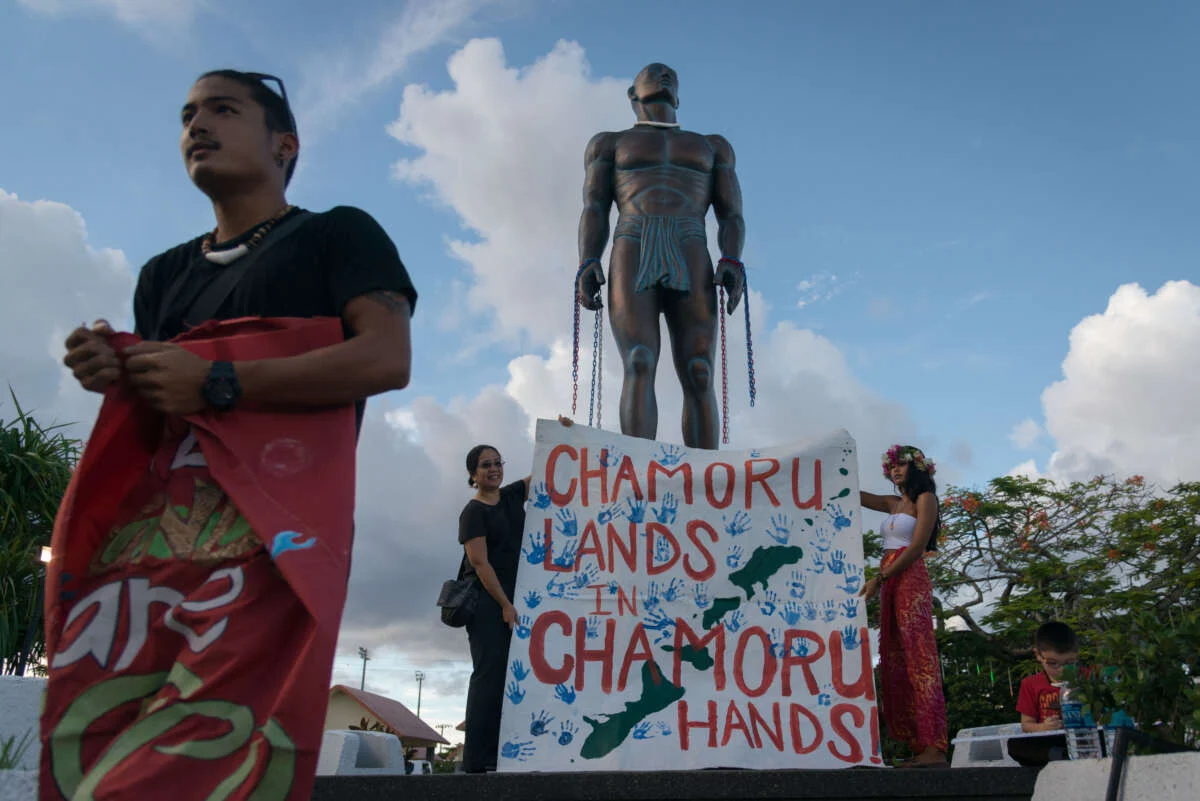When residents of Guam celebrate Independence Day at one of the island’s two major U.S military bases on Thursday, the festivities will be tinged with irony.
The small U.S territory is one of 17 remaining colonies around the globe. While Guamanians have American citizenship, they cannot elect the U.S president and have only a single, non-voting representative in the U.S Congress.
As a territory, Guam has no say in foreign policy either, restraining its ability to engage with Pacific island neighbours on regional concerns ranging from climate change to growing militarisation.
But that could soon change. Last month, the U.S. State Department officially endorsed Guam’s application to upgrade its standing at the Pacific Islands Forum (PIF), the region’s peak diplomatic body.
Guam along with two other U.S Pacific territories, American Samoa and the Northern Mariana Islands (CNMI), currently hold observer status with PIF, but American Samoa and Guam have applied to join as non-voting associate members.
Washington had vetoed the territories’ ability to apply for member status since 2011. Permission now comes with the caveat that they can’t take foreign policy positions.
On Monday, PIF’s new secretary general, Baron Waqa, said the applications would be discussed in August at the forum’s 53rd leaders meeting in Tonga.
“I’m not in a position to anticipate [the result],” Waqa said at a press conference at the PIF secretariat in the Fijian capital of Suva.
“The prerogative is on the leaders to decide. This will be debated well enough to get a truthful outcome at the Tonga meeting.”
The Forum, founded in 1971, comprises 18 members from across Melanesia, Micronesia and Polynesia. Two French territories, New Caledonia and French Polynesia, are PIF members while also being on the United Nations decolonization list.
In June, at the Micronesian Islands Forum hosted by Guam, the leaders of Palau, Marshall Islands and the Federated States of Micronesia said they would support the U.S territories’ bids to join PIF.
Guam, which lies about 1,600 miles (2,600 km) east of the Philippine capital Manila, has a population of slightly more than 150,000, according to the 2020 U.S census.
The island hosts two U.S military bases – Andersen Air Force Base in the north and Naval Base Guam in the south – and has an economy reliant on military investments and tourism.
The U.S military holds about 25 percent of Guam’s land and stations thousands of troops on the island.
Another 5,000 American marines will begin relocating from Japan’s Okinawa islands to Guam in December, as part of a 2006 agreement between Washington and Tokyo.
As geopolitical competition between the U.S and China heats up in the Pacific, Guam’s significance in supporting American naval and air operations is growing. The U.S military sees the island as an essential logistics centre in the event of potential conflict over Taiwan or in the South China Sea.
The U.S Department of Defence plans to spend US$11 billion to upgrade military infrastructure on the island to accommodate the increasing number of servicemen, with Japan covering US$6 billion of the projected costs.
In addition, the U.S has earmarked at least U$1.5 billion to build an integrated missile defence system on the island.
While the U.S military presence forms the backbone of the economy, it is a point of contention for many Chamorro, the indigenous people of Guam.
“As long as our island remains a non-self-governing territory, our relationship with our administering power on matters of expanded militarisation will always be based on consultation and not consent,” Melvin Borja, executive director of the Guam Decolonisation Commission, told the UN Special Committee on Decolonisation on 10 June.
“This is not an equitable arrangement,” he added.
The arrangement put Guam at risk of attack from enemies of the U.S, as well as environmental and socio-cultural impacts caused by an increased military presence on the island, Borja said.
Guam is within range of Chinese and North Korean ballistic missiles.
Guam’s push for self-determination has been decades in the making.
A non-binding plebiscite that asked Guamanians to choose between independence, statehood or free association with the U.S was originally scheduled for 1991. But it has been on the backburner ever since due to conflict over voter eligibility.
In 2019, the 9th U.S Circuit Court of Appeals struck down a controversial local law that sought to limit the vote to “native inhabitants of Guam.” The court ruled that the “racially discriminatory” law was unconstitutional.
Despite the ruling, Guam’s Governor Lou Leon Guerrero is reluctant to open up the plebiscite to non-native voters and the ballot is yet to be scheduled.
With the status quo, the territory doesn’t have the power to challenge its position in U.S homeland defence. In the meantime, local leaders are compromising by seeking to leverage the federal spending that keeps the local economy afloat.
“Our focus remains on finding a balance between adapting to the changing circumstances and safeguarding our people and assets, all while upholding the nation’s defence capabilities,” Leon Guerrero said during a meeting with military officials last month.
Carlotta Leon Guerrero, the governor’s chief advisor for military and regional affairs, said Guam shares the same goals as PIF.
“Guam, like every member of PIF, has fully endorsed the 17 UN Sustainability Goals and we are coordinating our compliance via the Guam Green Growth initiative,” she said in a statement to BenarNews.
Carlotta Leon Guerrero said Guam’s contribution to combatting the consequences of climate change on local, regional and global levels “can also serve as a useful template for other Pacific governments to replicate.”
“It shows our fellow Pacific leaders that the U.S. listens to Guam and works with us to advance our shared goal of taking a greater role in improving the lives and well-being of Pacific peoples,” she said.














